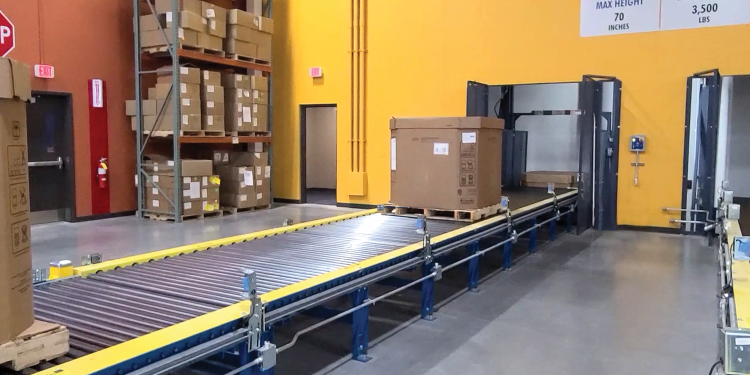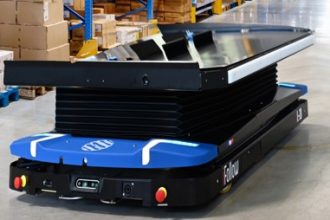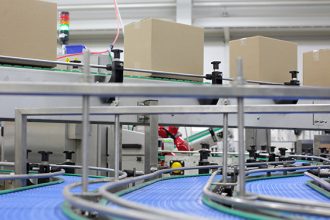Vertical Reciprocating Conveyors as Part of Fully Automated Systems

Fully automated conveyor systems are integral to the efficient movement of materials in applications requiring the movement of materials across a facility’s footprint. Whether moving materials from a production line to a storage area, or from a warehouse pick module to a warehouse SLAM area, automated conveyor systems transport and manipulate products or materials without human intervention.
Automated conveyor systems often include different types of conveyors, such as belt conveyors, roller conveyors, and gravity conveyors, depending on the requirements of the application. But what if your automated application requires moving large and/or heavy materials between floor levels? Don’t let this be the end of your automated system!
Flexible Vertical Automation Solutions
One of the key benefits of using VRCs as part of an automated system is that they help to increase efficiency and reduce labor costs. Because VRCs can be customized to accommodate varying load capacities, vertical travel distance, and speed, this makes them the perfect addition to an automated system. By removing the manual process of moving materials between floor levels, you can decrease materials damage, increase worker safety, and minimize human error.
VRCs can be integrated with almost any automated conveyor components such as automated guided vehicles, (AGVs), autonomous mobile robots (AMRs), and almost any type of horizontal conveyor components such as belt or roller conveyors. These components can be integrated with VRCs via a programmable logic controller (PLC), and may also include sensors or cameras that detect movement, activating the opening/closing of the VRC safety gates, and lifting/lowering of the VRC carriage.
Below are examples of how VRCs are used as part of fully automated systems:
Manufacturing production lines: VRCs can be used to transport raw materials and finished products to and from production lines. This allows for a more efficient workflow, as materials can be moved quickly and safely, without the need for manual handling.
Distribution centers: In distribution centers, VRCs can be used to move products between levels, such as from a receiving area to a storage area or from a pick module to the SLAM area.
Sorting and distribution: Automated sorting and distribution systems can use VRCs to lift and lower products to different conveyors levels for further processing.
Order picking and fulfillment: VRCs can be used to transport items between different levels of a distribution center to support automated order picking and fulfillment. For example, a VRC could move a pallet of products from a storage area to a picking station on a different level.
The integration of VRCs into fully automated systems can improve overall material handling efficiency, reduce labor costs, and minimize the risk of injury associated with manual material handling.
To learn more about MHI’s CSS-VRC industry group: https://www.mhi.org/conv/vrclift
To read more about VRC’s:
Why A Vertical Reciprocating Conveyor Can Play A Critical Role …
Resource Shares Details On Vertical Reciprocating Conveyor Applications
Learn More About Different Automated Sortation And Conveyor Systems With …



